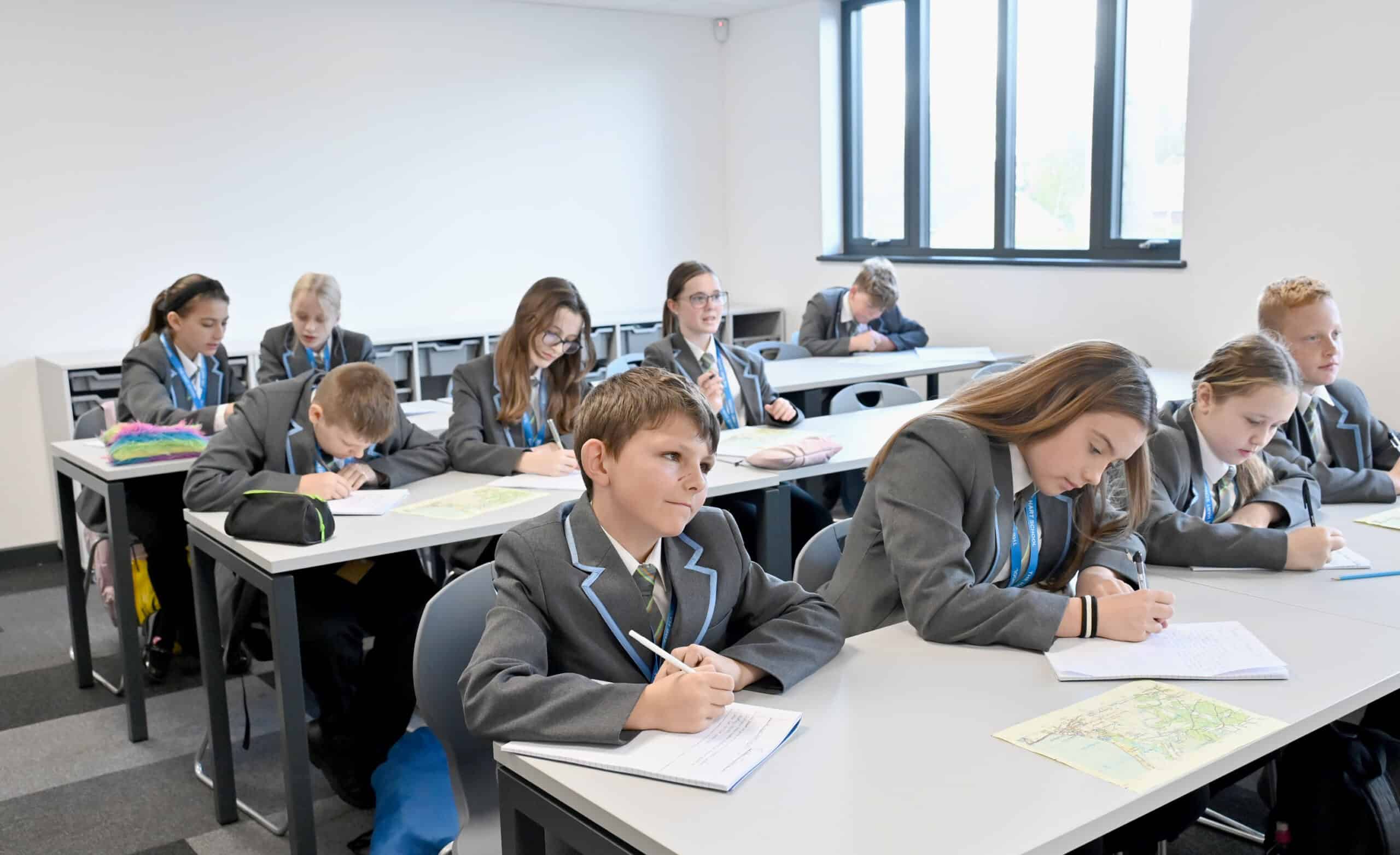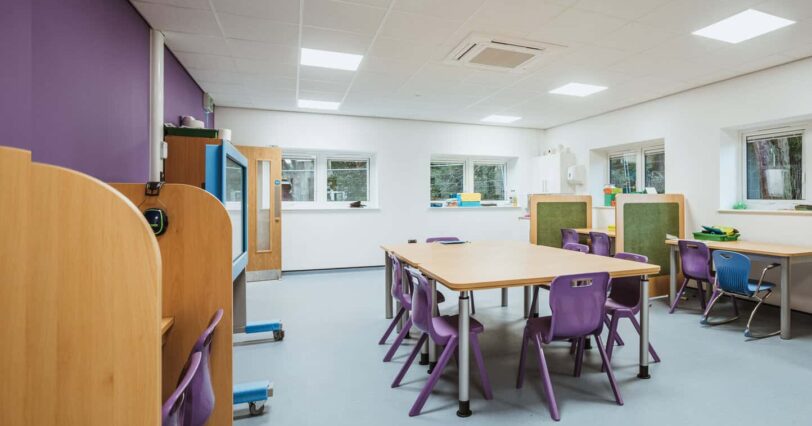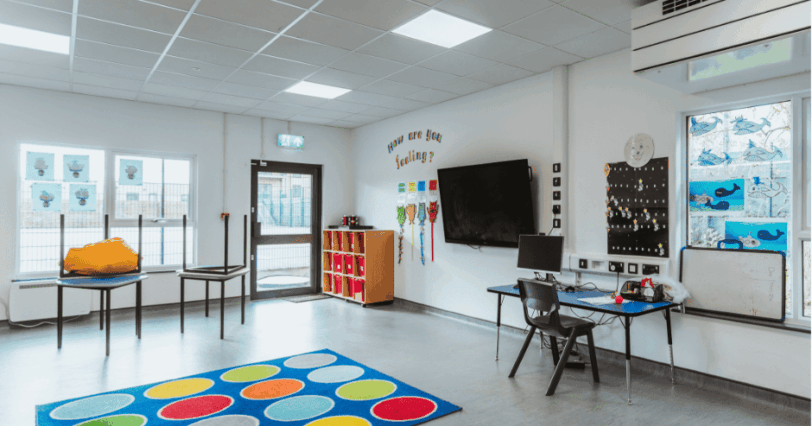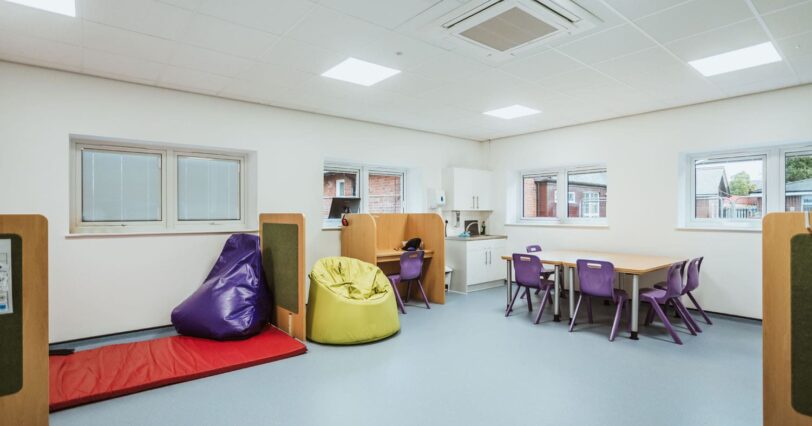School environments are rapidly evolving from every possible angle in response to the latest learning, wellbeing, statutory, safeguarding and wider requirements.
With this change comes multiple opportunities to push new boundaries and create spaces where children can excel within safe and secure surroundings.
From a practical perspective, creating these optimum learning environments is underpinned by five core fundamentals: ergonomics, acoustics, air quality, air temperature and lighting, and delivered using intelligent building design.
We explore how these fundamentals are being achieved in reality, using two project examples we have worked our intelligent building design magic on, to achieve outstanding results:
Fundamental factor 1: Ergonomics
Classrooms can be transformed into healthy learning spaces by using modular furniture that meets everyone’s needs. Tables, soft seating, sofas and cubes can be mixed and matched to create limitless configurations that are functional and flexible.
For example:
At Broadfields Primary School, we created spaces that aligned with the school’s SEND requirements. There’s a dedicated sensory, therapy and group room, as well as clever design features, including curved walls that make it easier for children with specific needs to see what’s happening around them.
Fundamental factor 2: Acoustics
With the Department for Education setting out 93 acoustic design minimum performance standards, acoustics have never been so important. Measures, such as acoustic wall panels, soundproofing and ceiling baffles, can easily be integrated, absorbing sound and aiding concentration.
Fundamental factor 3: Air quality
High air quality can reduce drowsiness, headaches and concentration problems and improve overall academic performance. Ideally, fresh air should circulate throughout entire school environments. Schools are increasingly investing in Mechanical Ventilation with Heat Recovery (MVHR) systems to boost air circulation. These systems are capable of typically recovering between 73 and 95% of the heat that is present within exhaust air, significantly improving the energy efficiency of school buildings in the process while improving air quality.
For example:
The Hart School has been fitted with an MVHR system which, alongside other measures, including extensive insulation and PV panels, means the school is net zero in operation. Air quality is high thanks to the MVHR system, improving the environment and student performance.
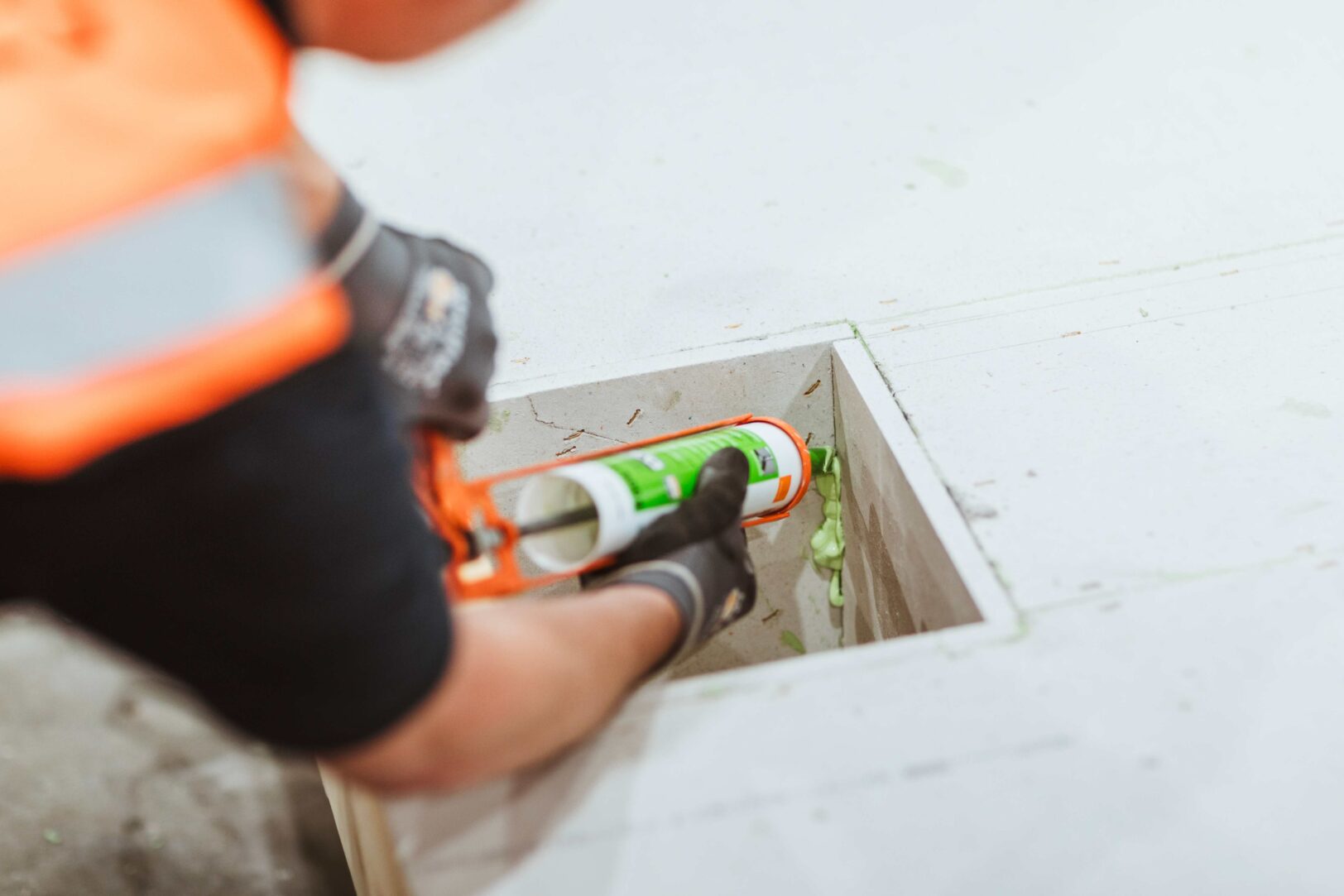
Fundamental factor 4: Air temperature
Maintaining an optimal air temperature is essential for student comfort, concentration, and overall wellbeing. Studies have shown that excessive heat or cold can negatively impact cognitive function, leading to decreased productivity and engagement in the classroom. Schools must ensure a stable indoor temperature through effective insulation, airtight construction, and energy-efficient heating and cooling systems.
For example:
The Hart School is super-insulated. This has made the entire building extremely airtight, which has generated an air permeability value of 1.73m3/(h.m2) at 50 Pa (significantly lower than the typical value of 5 for this type of building). This means that the school can easily maintain temperatures without excessive heating bills.
Fundamental factor 5: Lighting
Natural lighting helps create better learning conditions, thanks to its ability to promote Vitamin D generation and regulate the body’s internal clock, helping boost mental performance among many other things. Large, frameless windows can be used to increase natural light streams, so too can considering how and when the sun shines on buildings and positioning the windows to let in maximum sunshine.
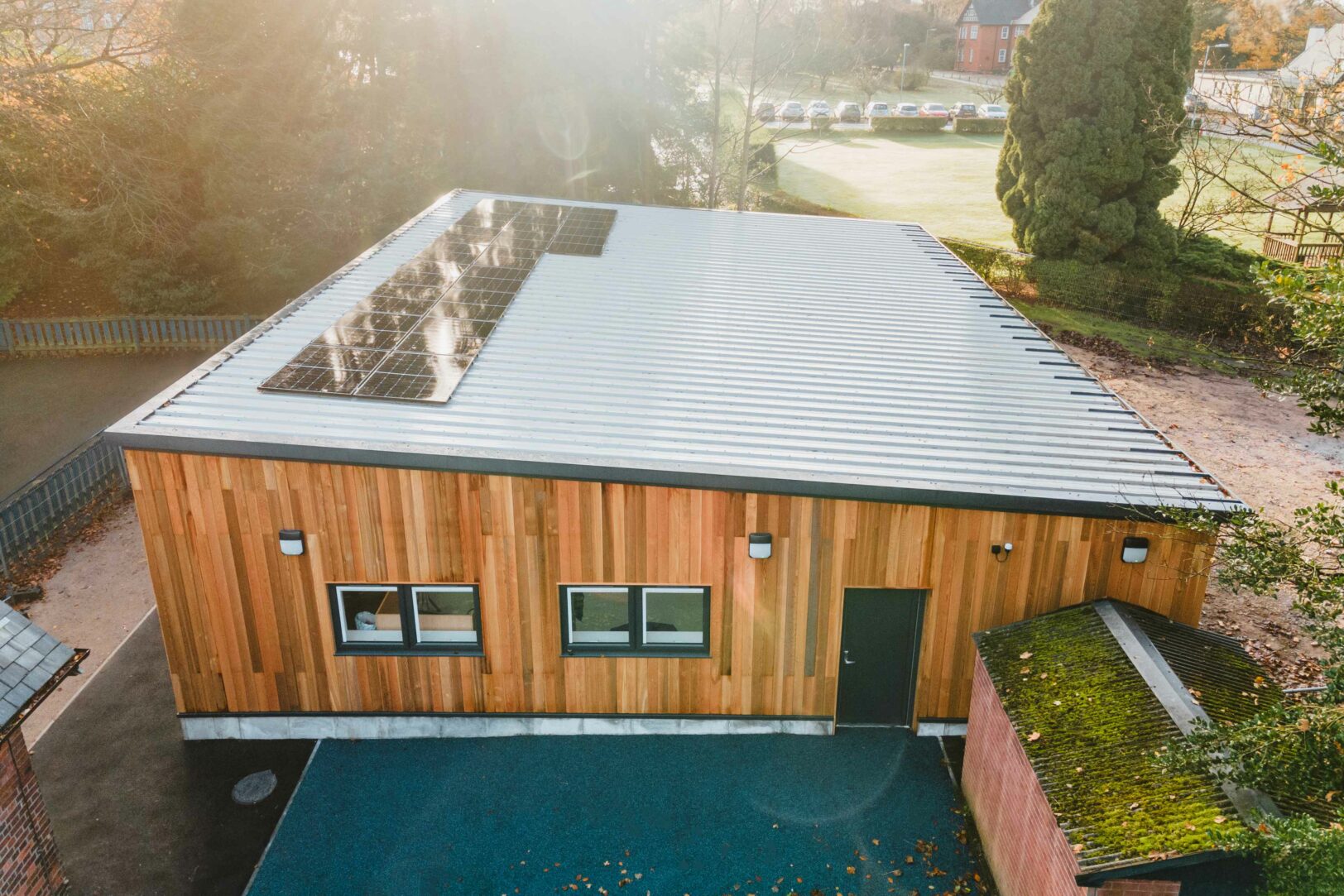
For example:
We created a mono pitch roof (highest ridge 4.1m) to maximise natural daylight for students’ learning at Broadfields Primary School. We also positioned the windows at a higher level to enable even more natural light to stream in to the building.
To learn more about the five fundamentals in practice read the full case studies:
Broadfields Primary School case study: https://netzerobuildings.co.uk/case_studies/broadfields-primary-school/
The Hart School case study: https://netzerobuildings.co.uk/case_studies/hart-school-accommodating-rising-pupil-numbers-and-supporting-net-zero-aspirations/


